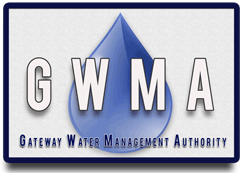The concept for the Los Cerritos Channel Watershed Segmentation and Low Impact Development (LID) Planning Project evolved out of developing an implementation plan for US EPA-established Metals TMDLs that have both dry-weather and wet-weather waste load allocations. The final TMDLs were established by EPA on March 17, 2010 and set aggressive targets for the reduction of copper and zinc in municipal discharges of dry-weather urban runoff and stormwater within the watershed. To address the impairments, an emphasis was placed on source control and runoff reduction. A critical question was how to target investments in LID and water harvesting to realize more immediate improvements in water quality. The consultants working with cities within the Watershed concluded that the most efficient and cost-effective approach to targeting LID and water harvesting investments would be to start with dry weather and to combine monitoring with land use analyses to determine optimum locations for installation of LID/green street measures and water harvesting facilities.
The dry-weather monitoring work done under this project was at six sites located in the Los Cerritos Channel Watershed within Los Angeles County Flood Control District channels located in the Cities of Lakewood and Long Beach. Temporary and easily removable flume systems capable of accurately measuring and recording low flows were deployed for a period of approximately ten weeks during the dry season. Three 24-hour time composited water quality surveys were conducted during the deployment of the flume systems. Sampling was performed using 24-hour time-composites of the dry weather flow at each site. Data from these surveys formed the basis for prioritization of sites for upstream forensic investigation to assist in the identification of sources and nature of discharges in the channels. Data will help in determining optimal locations for future water harvesting, as well as for green streets and other LID measures, which should serve to reduce metals mobilization and transport by reducing runoff through infiltration, evapotranspiration, and capture and infiltration or use.
The participating cities are Bellflower, Cerritos, Downey, Lakewood, Long Beach, Paramount, Signal Hill, and LACFCD.
